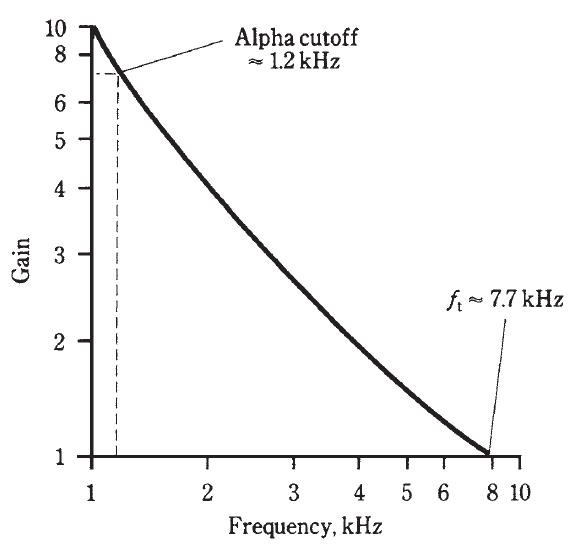
Gain versus frequency
 المؤلف:
Stan Gibilisco
المؤلف:
Stan Gibilisco
 المصدر:
Teach Yourself Electricity and Electronics
المصدر:
Teach Yourself Electricity and Electronics
 الجزء والصفحة:
407
الجزء والصفحة:
407
 10-5-2021
10-5-2021
 2218
2218
Gain versus frequency
Another important specification for a transistor is the range of frequencies over which it can be used as an amplifier. All transistors have an amplification factor, or gain, that decreases as the signal frequency increases. Some devices will work well only up to a few megahertz; others can be used to several gigahertz.
Gain can be expressed in various different ways. In the above discussion, you learned a little about current gain, expressed as a ratio. You will also sometimes hear about voltage gain or power gain in amplifier circuits. These, too, can be expressed as ratios. For example, if the voltage gain of a circuit is 15, then the output signal voltage (rms, peak, or peak-to-peak) is 15 times the input signal voltage. If the power gain of a circuit is 25, then the output signal power is 25 times the input signal power.
There are two expressions commonly used for the gain-versus-frequency behavior of a bipolar transistor. The gain bandwidth product, abbreviated fT, is the frequency at which the gain becomes equal to 1 with the emitter connected to ground. If you try to make an amplifier using a transistor at a frequency higher than its fT, you’ll fail! Thus fT represents an absolute upper limit of sorts.
The alpha cutoff frequency of a transitor is the frequency at which the gain becomes 0.707 times its value at 1 kHz. A transistor might still have considerable gain at its alpha cutoff. By looking at the alpha cutoff frequency, you can get an idea of how rapidly the transistor loses gain as the frequency goes up. Some devices “die-off” faster than others.
Figure 1 shows the gain band width product and alpha cutoff frequency for a hypothetical transistor, on a graph of gain versus frequency. Note that the scales of this graph are nonlinear; they’re “scrunched up” at the higher values. This type of graph is useful for showing some functions. It is called a log-log graph because both scales are logarithmic rather than linear.

Figure 1: Alpha cutoff and gain bandwidth product for a hypothetical transistor.
 الاكثر قراءة في الألكترونيات
الاكثر قراءة في الألكترونيات
 اخر الاخبار
اخر الاخبار
اخبار العتبة العباسية المقدسة


